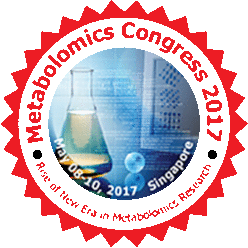Walter Wahli
Nanyang Technological University, Singapore
Title: PPARα in hepatocytes integrates microbiome-derived signals and is protective against fatty liver in both neonate and adult mice
Biography
Biography: Walter Wahli
Abstract
The liver is a key organ of metabolic homeostasis with functions that oscillate in response to food intake. Germ-free mice display altered daily oscillation of clock gene expression with a change in the expression of clock output regulators. These alterations in microbiome-sensitive gene expression are associated with daily alterations in lipid, glucose and xenobiotic metabolism as revealed by hepatic metabolome analyses. Hepatic lipid catabolism is essential for the newborns to use milk fat as an energy source. PPARα in hepatocytes is critical for this function. PPARα expression is stimulated a few days before birth, which prepares the receptor for its physiological role in harnessing milk lipids after birth. This mechanism involves a fetal glucocorticoid receptor (GR)-PPARα axis in which GR directly binds to the Pparα promoter to stimulate its activity. In turn, under the control of PPARα, the expression of genes required for lipid catabolism is enhanced before birth so that the neonatal liver has a prompt capacity to extract energy from milk upon suckling. Interestingly, the PPARα target gene Fgf21 is not stimulated in the fetal liver and responds to PPARα only after birth following an epigenetic switch triggered by β-hydroxybutyrate-mediated inhibition of histone deacetylase 3. This study unveiled an endocrine axis in which fetal GR stimulates the expression of PPARα in anticipation of the shift in postnatal nutrient source. In adult mice, liver-specific deletion of PPARα impairs fatty acid homeostasis in the context of induced steatosis. It occurs without obesity and hyperglycemia. Therefore, liver-specific deletion of PPARα dissociates steatosis from obesity and type-2 diabetes. Altogether these findings underscore the relevance of hepatic PPARα as a drug target for NAFLDs as they show that PPARα plays a central role in the clearance of free fatty acids released from adipocytes, the major source of lipid that accumulate in NAFLD.

